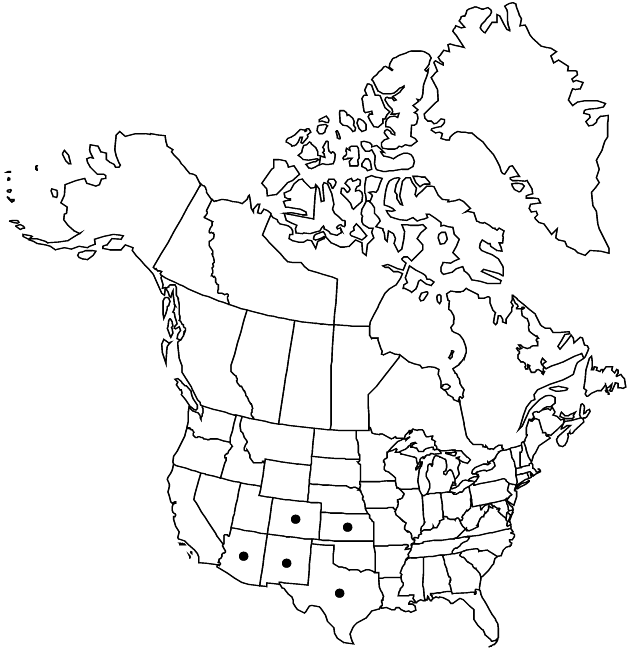Difference between revisions of "Brickellia brachyphylla"
Smithsonian Contr. Knowl. 3(5): 84. 1852.
FNA>Volume Importer |
FNA>Volume Importer |
||
| Line 49: | Line 49: | ||
|publication year=1852 | |publication year=1852 | ||
|special status= | |special status= | ||
| − | |source xml=https://jpend@bitbucket.org/aafc-mbb/fna-data-curation.git/src/ | + | |source xml=https://jpend@bitbucket.org/aafc-mbb/fna-data-curation.git/src/8f726806613d60c220dc4493de13607dd3150896/coarse_grained_fna_xml/V19-20-21/V21_1245.xml |
|tribe=Asteraceae tribe Eupatorieae | |tribe=Asteraceae tribe Eupatorieae | ||
|genus=Brickellia | |genus=Brickellia | ||
Revision as of 15:31, 18 September 2019
Perennials, 30–100 cm (caudices woody). Stems branched, pubescent. Leaves mostly alternate (sometimes subopposite); petioles 0–3 mm; blades 3-nerved from bases, lanceolate or lance-ovate, 10–50 × 4–20 mm, bases acute to obtuse, margins serrate or entire, apices acute, faces sparsely to densely pubescent, often gland-dotted or stipitate-glandular. Heads usually in open, racemiform or paniculiform arrays, rarely borne singly. Peduncles 4–20 mm, pubescent. Involucres cylindric to campanulate, 8–11 mm. Phyllaries 15–20 in 4–5 series, greenish, often purple-tinged, 5–9-striate, unequal, margins narrowly scarious (often ciliate, apices acute to acuminate or subaristate); outer lance-ovate (often puberulent), inner narrowly lanceolate (glabrous). Florets 9–12; corollas pale yellow-green, often purple-tinged, 4.5–6 mm. Cypselae 2.5–5.3 mm, mostly velutinous, sometimes pubescent; pappi of 27–32 white, usually plumose, rarely barbellate, bristles. 2n = 18.
Phenology: Flowering Jul–Oct.
Habitat: Limestone cliffs, rhyolitic rock, rocky ridges, canyon walls, hillsides
Elevation: 1400–2400 m
Distribution

Ariz., Colo., Kans., N.Mex., Tex.
Discussion
Selected References
None.